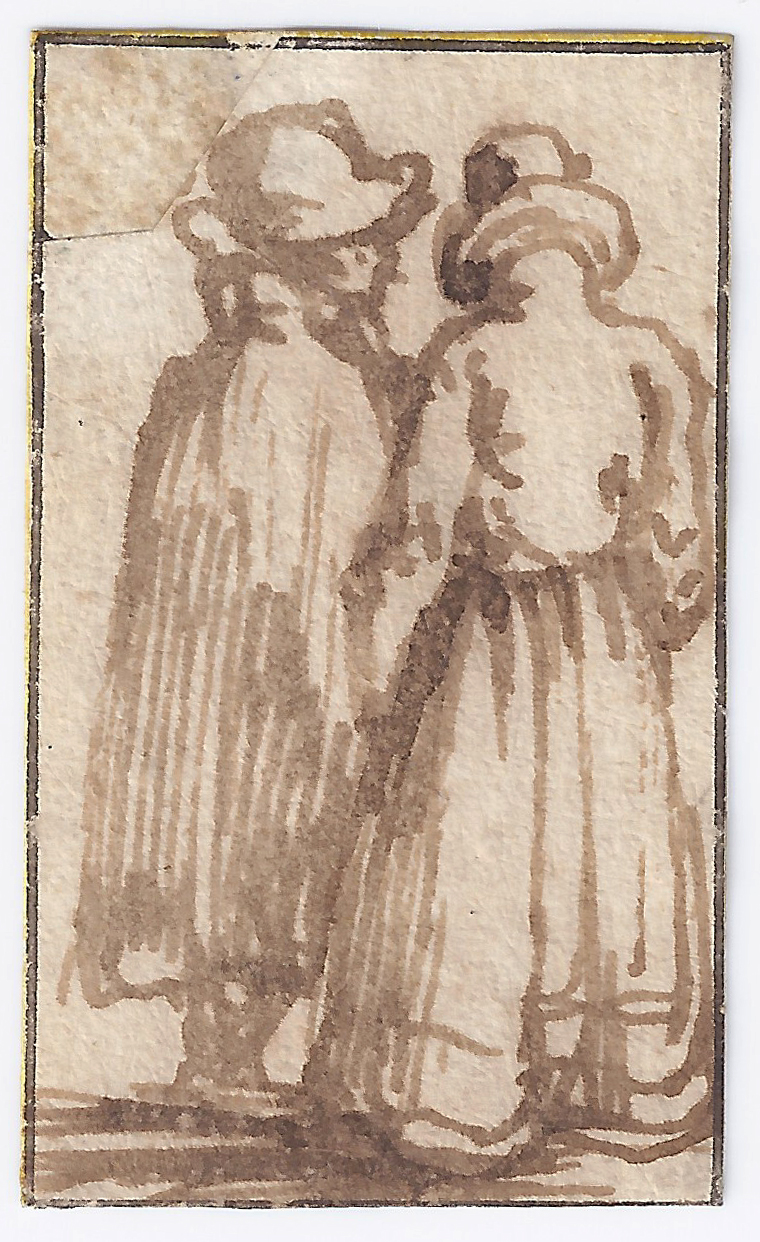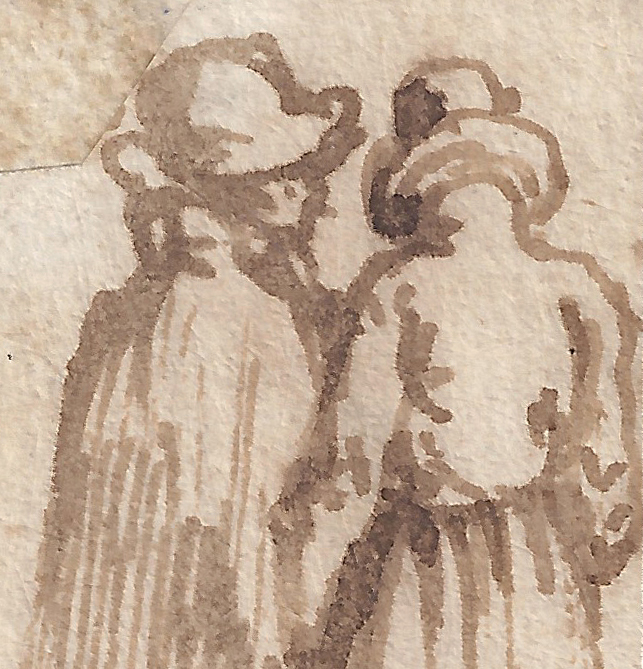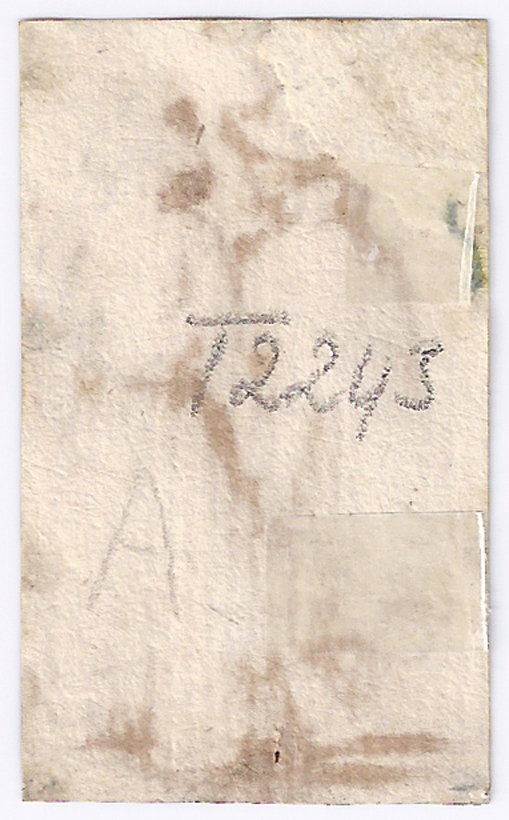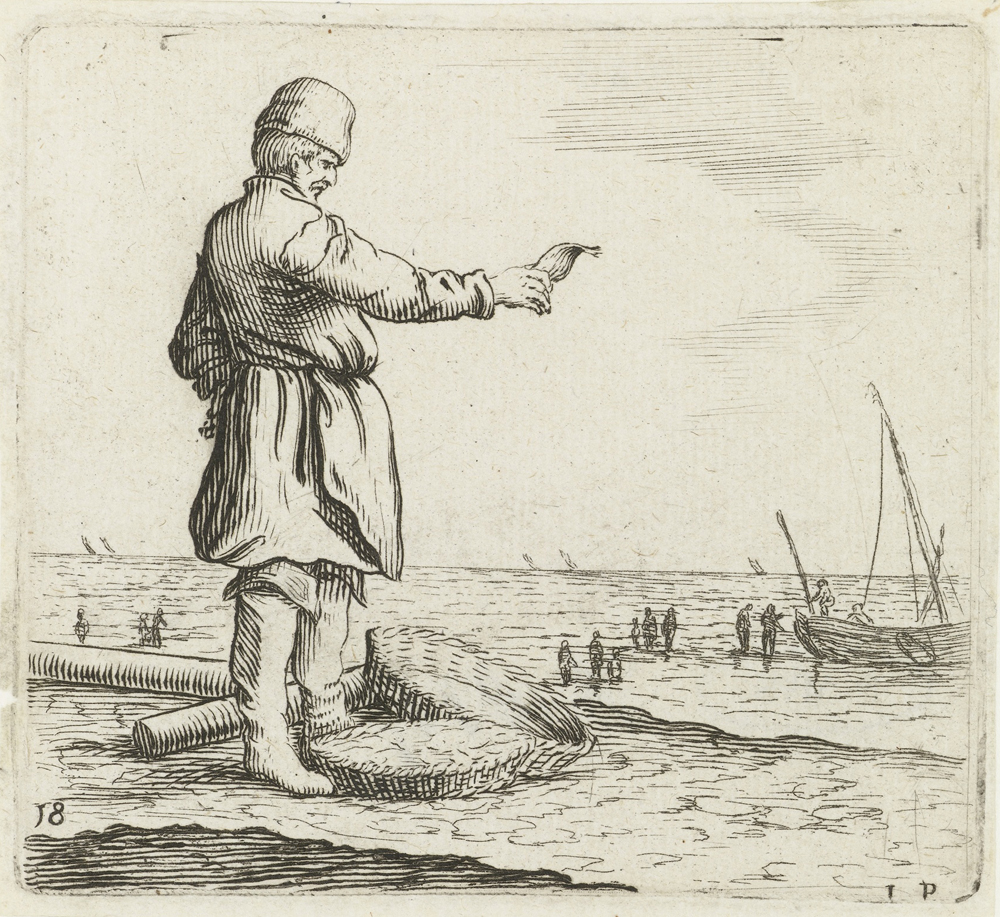JAN PORCELLIS (Ghent 1580 – 1632 Zoeterwoude)
Jan Porcellis (Ghent 1580 – 1632 Zoeterwoude)
An Elegant Couple Seen from Behind
Pen and brown ink, brown ink framing lines, 49 x 29 mm (1.9 x 1.1 inch)
Provenance
~ Anonymous sale, Christie’s, New York, 9 June 1981, part of lot 59 (as Herman Saftleven)
~ Lodewijk Houthakker (1926-2008), Amsterdam
***
Jan Porcellis’s father, Captain Jan Pourchelles or Porcellis, was one of the many Flemish refugees from the renewed Spanish persecutions in 1585 who emigrated to the Northern Netherlands. The family settled at Rotterdam, where Jan Porcellis is first recorded on the occasion of his marriage in 1605. He probably started his career as a graphic artist. The artist is first mentioned as a painter in Antwerp, where he moved in 1615 following his bankruptcy in Rotterdam.
His fortunes changed after he settled in Haarlem in 1622. There he developed an original manner of marine painting, pioneering the ‘tonal’ style that his contemporaries Pieter de Molijn, Salomon van Ruysdael and Jan van Goyen were exploring in landscape painting. The vivid local colours of the previous generation of marine painters, most notably Vroom and his followers, gave way to a virtually monochrome palette of light grey and brown, enlivened with brilliant white highlights to mark the crests of the waves or to suggest sunlight filtering through hazy clouds. Porcellis left Haarlem for Amsterdam in 1624 and in 1626 lived in Voorburg near The Hague. His last few years, from c. 1628, were spent in Zouterwoude near Leiden, where he owned extensive properties. Samuel Ampzing, in his biography of the town of Haarlem of 1628, hailed Porcellis as ‘de grootste konstenaer in schepen’ (‘the greatest ship artist’).1
Apart from pioneering ‘tonal’ painting in Haarlem in the 1630s, Porcellis inspired the leading Dutch marine painters of the mid-17th century, especially Simon de Vlieger, Jan van de Cappelle and their followers. Both Rembrandt and Van de Cappelle collected paintings and drawings by Porcellis.
In addition to a small painted oeuvre of some fifty works, Porcellis produced a series of twenty etchings, featuring fishermen on the shore, published as Verscheyden stranden en water gesichten in Haarlem during the 1620s. In addition he is the author of a small body of around twenty or thirty drawings, although there are likely to have been many more.2 Most drawings by Porcellis are executed in ‘painterly’ technique with the brush and in ink washes, and are sometimes monogrammed. They are likely to have been made later in his career for dedicated collectors of ‘papierconst’ (paper art).
The present charming postage-stamp size sheet is part of a small group of drawings which seem earlier in date than most of Porcellis's known drawings (both stylistically and in terms of costume history). They are likely to date from c. 1610-20. The regular parallel vertical hatchings in the figures are highly distinctive and suggest the hand of an engraver, such as Porcellis was early in his working life. It is interesting to note that comparable vertical hatching occurs in most of the prints of the Verscheyden stranden en water gesichten series, for instance in the Fisherman holding a Fish (fig.).3
1. Samuel Ampzing, Beschrijvinge ende lof der stad Haerlem, Haarlem 1628, p. 372.
2. See John Walsh, Jan and Julius Porcellis: Dutch marine painters, Ann Arbor 1974.
3. Rijksprentenkabinet, Rijksmuseum, Amsterdam, inv. no. RP-P-1894-A-18337; Hollstein Dutch 161-2(2).



